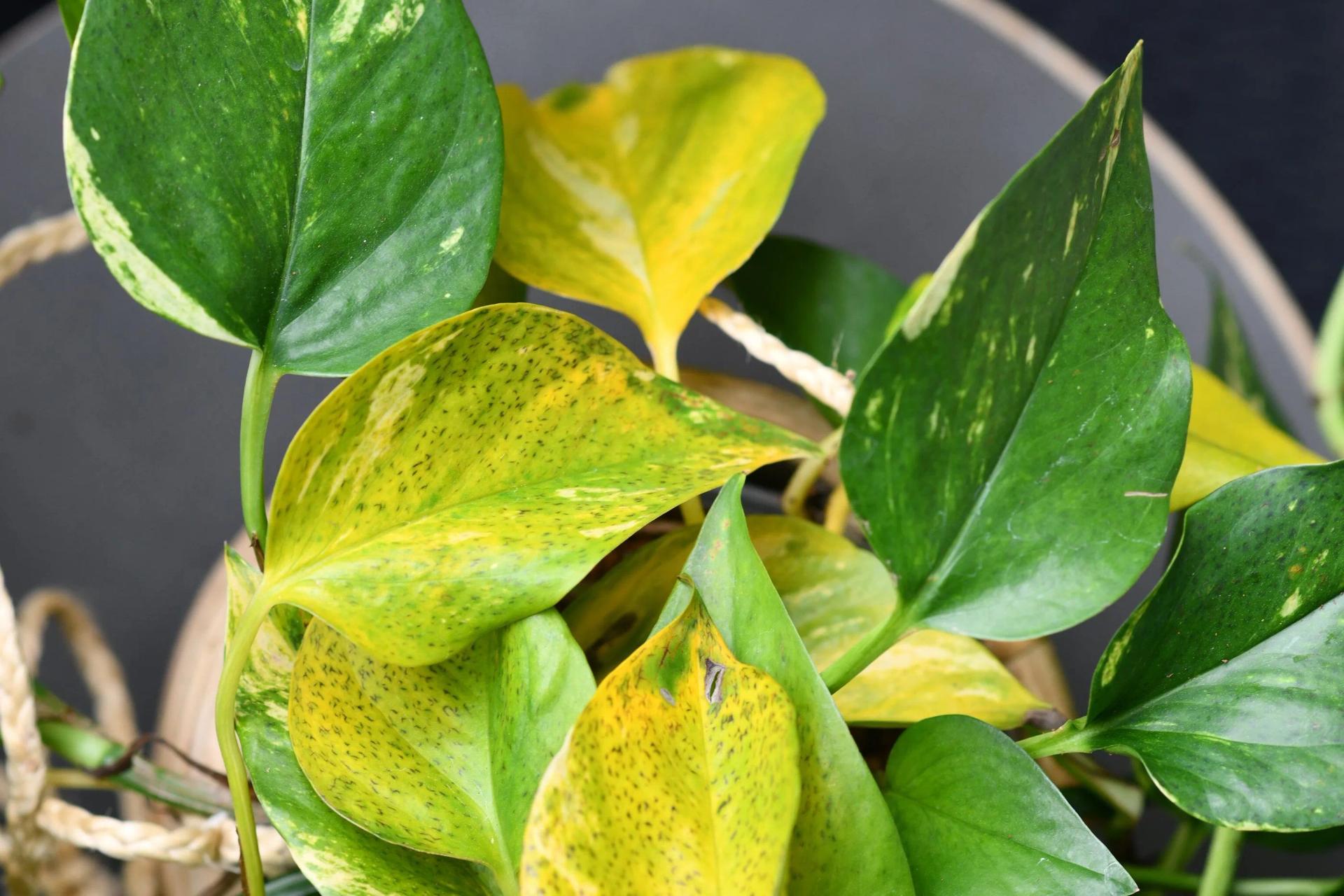Plants, like everything alive, aren't static. Sometimes you will notice some unpleasant changes in their appearance. It can be the symptom of a disease or unsuitable conditions. Identifying plant diseases in time can be lifesaving. We gathered the main signs that something is not ok with your plant so that you can take action ASAP and save your green pet from serious issues.

Yellowing leaves
Yellowish leaves aren’t always something inherently wrong. They can change their color naturally due to aging. For new leaves to arrive, older ones become yellow and then fall off. But when young leaves turn yellow, something about their condition is unbalanced. They might get too much fertilizer, nutrient deficiency, too much salt in the soil, etc. Water is also an essential factor. In case of overwatering, the roots won't be able to breathe. Light is also important – the plant needs to get not too much of it or, again, not too little.
At times, yellowing can be caused by plant leaf diseases or pests. Some insects like mites, mealybugs, aphids, whiteflies, etc., can be the reason for leaves getting yellow. Unfortunately, they are too small to notice with the naked eye. These insects are sucking the plant's sap, so the leaves start to yellow and fall off. Root diseases are also can be the reason for this symptom.

Brown spots
Leaf sunscald is one of the most common reasons for brown spots occurring on the leaves. Symptoms of sunburn include brown tips on plants yellow or pale leaves. Low humidity is another reason why your plant can have it. If you notice brown spots and leaves and buds are falling off, excess sun exposure is not the issue. This problem becomes common in winter when humidity becomes lower in apartments compared to warmer seasons.
Sometimes, spider mites are the ones who are behind the little brown spots. Web under the leaves is crucial evidence of their presence. House plant diseases also cause brown spots to appear on the foliage. One of them is rust; it’s a fungus that prefers wet environments. Fungus is also capable of causing brown spots with yellow edges.

Black spots
Too much water is the common reason for black spots occurring on house plants. However, black spots on houseplants can also be caused by common plant diseases or pests. Fungal infection is the most typical reason; mostly, it's called a 'leaf spot.' Fungus thrives in wet conditions, so the best way to prevent it is not to overdo misting and let the plant dry out between the waterings. Here are some tips on preventing such a problem: water your plant early during the day; don't water it from the top but from the bottom; supply the green pet with good ventilation.
Bacterial infection is similar to fungal because its symptoms are also black spots on leaves, soft roots, wilts, and pests. The activity of insects can cause black spots. But there are home remedies for black spots on plants like horticultural oil or insecticidal soap. And neem oil will be helpful as always. However, sometimes the reason can be less scary, like age decline.

Drooping leaves
This symptom is confusing: you may think that drooping leaves are a signal that your plant needs water. In most cases, it might be true, however, some plants react to overwatering in the same way. Wilting can also be a result of exposure to too much sunlight. Thus, we recommend pouring some water into the pot and waiting for several hours to see if it gets better.

Soil or plant can't hold the water
There are two main reasons plants become root-bound or soil is hydrophobic. Remove the plant from its pot: if you notice that roots took over the container's entire space, you need to repot it immediately in a bigger container. If there is no space for soil to hold water, it can eventually cause root death.
Soil becomes hydrophobic when it has been dry for a prolonged period. You might notice that the water is not soaked in the potting mix at all: it just drains through the sides of the pot and drainage holes. To fix the issue, place the pot with the plant into a bigger container, filled with water. At first, the planter will float on the surface of the water because of the air inside the potting mix, so hold it under the water. Then, the bubbles of air will escape from the soil – wait until bubbling stops. After that, remove the plant and let it dry out.
Take action as soon as you see something is wrong
In many cases, insects can be the reason why your plant is ill. As it was mentioned above, neem oil or horticultural soap are effective methods of treating any pests. If your plant got brown spots because of too much light, move your plant somewhere it can get indirect bright sunlight. If you suspect low humidity influences your plant, a pebble tray is a solution. But sometimes you must be more radical, it depends on the types of plant diseases. Overall, don’t hesitate and start treating your plant as soon as you notice any unwanted symptoms. Most diseases are easily cured on the early stages.
If you noticed that something changed in your plants, pay attention to plant pests and diseases identification. The fast you find out what's wrong – the best. If you still don't know what to do, there's a disease identifier in our app that can be helpful!
